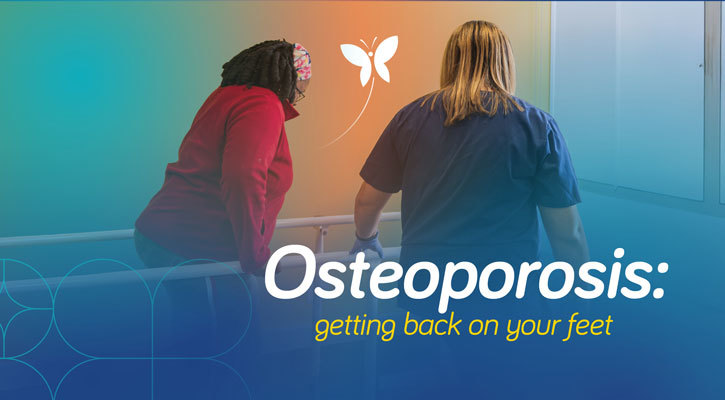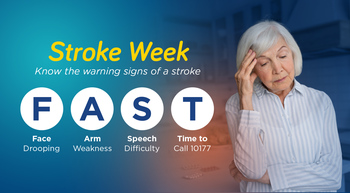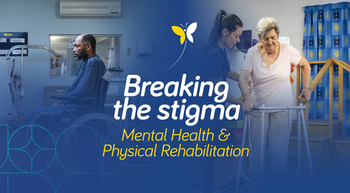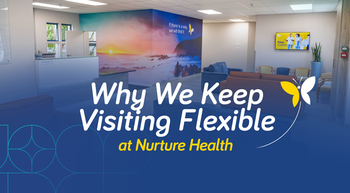
Osteoporosis: getting back on your feet
It is World Osteoporosis Day on 20 October, a day to understand a condition sometimes called the “silent epidemic”.
Simply put, osteoporosis is where a person has low bone mass or strength, which puts them at increased risk of a fracture. It is called the “silent epidemic” – sometimes “silent killer” – as it creeps up gradually and often is not picked up until a bone actually breaks.
Although most common in older women, it can also affect men.
If you are living with osteoporosis, you already will know that your bones are more fragile than most. A stumble that leads to a fall on a tiled floor, for example, can cause a fracture of the hip or spine – and in older people this can be devastating.
When this happens, it is not just the bone that needs healing, as your whole body and confidence may take a knock.
This is where physical rehabilitation comes in. At the national network of Nurture Health physical rehabilitation hospitals, our professional team works with you from day one to help you recover safely, regain your independence and reduce the risk of another fall or fracture.
What happens after a hip fracture
A hip fracture is one of the most common – and most serious – injuries linked to osteoporosis. Surgery is often required, followed by a carefully managed physical rehabilitation programme. In hospital, our physiotherapists and occupational therapists will:
- Teach you how to move safely, protecting your healing hip.
- Help you start walking again, first with support and then more independently.
- Build up your strength and balance with exercises.
- Show you safer ways of getting in and out of bed, chairs and the bathroom.
Read more: “Will I walk again?”
Physical rehabilitation does not stop once you are mobile so you can expect to go home with exercises to help you recover further. The aim is to restore your confidence so that you can get back to everyday activities such as walking, cooking, shopping or visiting friends.
What happens after a spinal fracture
Spinal, or vertebral, fractures are another common result of osteoporosis. They can cause pain, stiffness and changes to posture that make you feel unsteady on your feet. This is why the physical rehabilitation team will focus on:
- Managing pain and easing muscle tension.
- Teaching you how to move, bend and lift in safer ways.
- Strengthening your back and core muscles to support your spine – everyone loses muscle mass with aging, and it is important to keep as strong as possible.
- Improving posture and breathing, which often become harder after a spinal fracture.
With the right healthcare regimen many people find they can reduce their pain and stand taller.
Why physical rehabilitation matters
Without professional intervention, recovery after an osteoporotic fracture is slower and often incomplete. People may lose mobility, independence or even their ability to live safely at home.
At Nurture Health, we see physical rehabilitation as just as important as surgery or medication. Our multidisciplinary team aims to reduce pain, restore function, prevent the next fracture and keep you as independent as possible.
- Physiotherapists focus on strength, mobility, balance and safe movement.
- Occupational therapists help you adapt your daily routines and living space.
- Nurses and doctors ensure your medical care supports your recovery. Doctors may recommend vitamin D and calcium to boost bone density, and review medications that increase dizziness or drowsiness to cut the chance of a future fall.
- Psychologists and social workers assist with the emotional and social impact of your injury.
- Post-discharge home visits can pick up potential dangers for a fall such as loose rugs, poor lighting or slippery bathroom floors.
Together, they provide a programme tailored to your unique needs, because they know that every patient is unique.
Read more: Why it is important to start physical rehabilitation early
Physical rehabilitation is not just about recovery from today’s fracture, it also is about preventing the next one. As part of your medical treatment, the team will assess your fall risks, review your home set-up and guide you in building strength and balance for the long term.
World Osteoporosis Day is a reminder that bone health and fall prevention matter and that if you have already suffered a fracture, what matters most is getting back on your feet.
With professional physical rehabilitation at Nurture Health, you can recover safely, regain confidence and return to the activities that make life meaningful.




